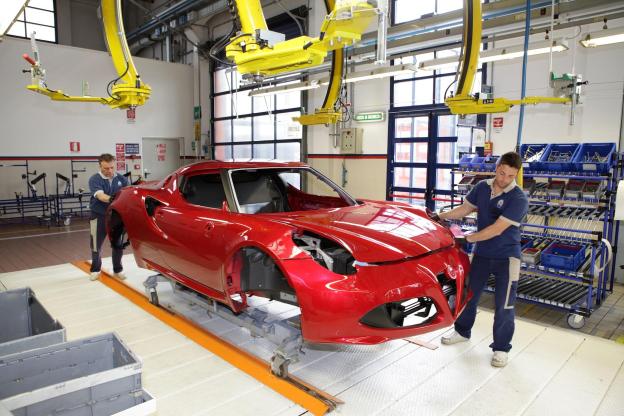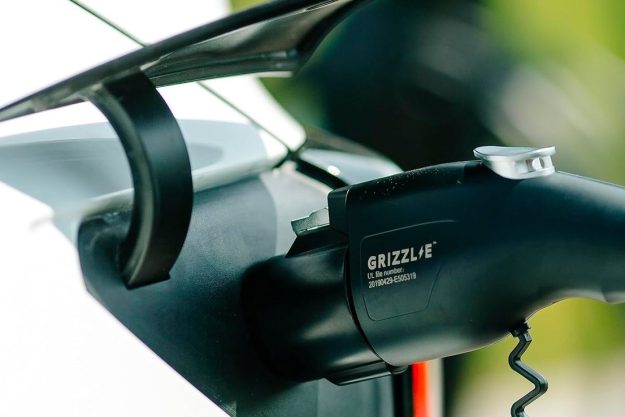
Alfa Romeo has revealed that the first examples of its all-new “compact supercar,” the 4C has officially gone into production at the Maserati assembly plant in Modena, Italy. The Maserati plant offers state-of-the-art manufacturing to the Alfa brand with an attention to detail typically reserved for handcrafted cars.
When Alfa designers penned the 4C, they started from scratch. Wanting to achieve a power-to-weight ratio of four kilograms per horsepower, while also creating an affordable sports car, they cleverly went about implementing lightweight materials into the design.
Over 25-percent of the 4C is constructed from carbon fiber. It is primarily used within the monocoque chassis as the central load-bearing material. Thanks to the extensive use of the lightweight carbon fiber material, the monocoque only weighs 65kg (143 pounds).
From there, Alfa designers implemented aluminum into the design and structural form. Aluminum is used in the roof to reinforce the front and rear frameworks. To limit the porosity of the aluminum and to ensure it was appropriately formed, Alfa used the ‘Cobapress’ process to shape the structural aluminum. “Cobapress joins the advantages of fusion and the benefits of forging under press by compressing the aluminum alloy even further,” according to an Alfa Romeo press release.
Alfa designers didn’t end their obsession with lightness with the structural forms of the 4C. Thanks to the adoption of a new real silhouette-thinning approach, the windows on the all-new sports car are 10-percent thinner, which represents an average of 15-percent weight savings.
With so much detail going into rigidity and stiffness, we’re convinced the Alfa Romeo 4C will be a brilliant sports car. The 4C should launch later this year so check back for more details.


